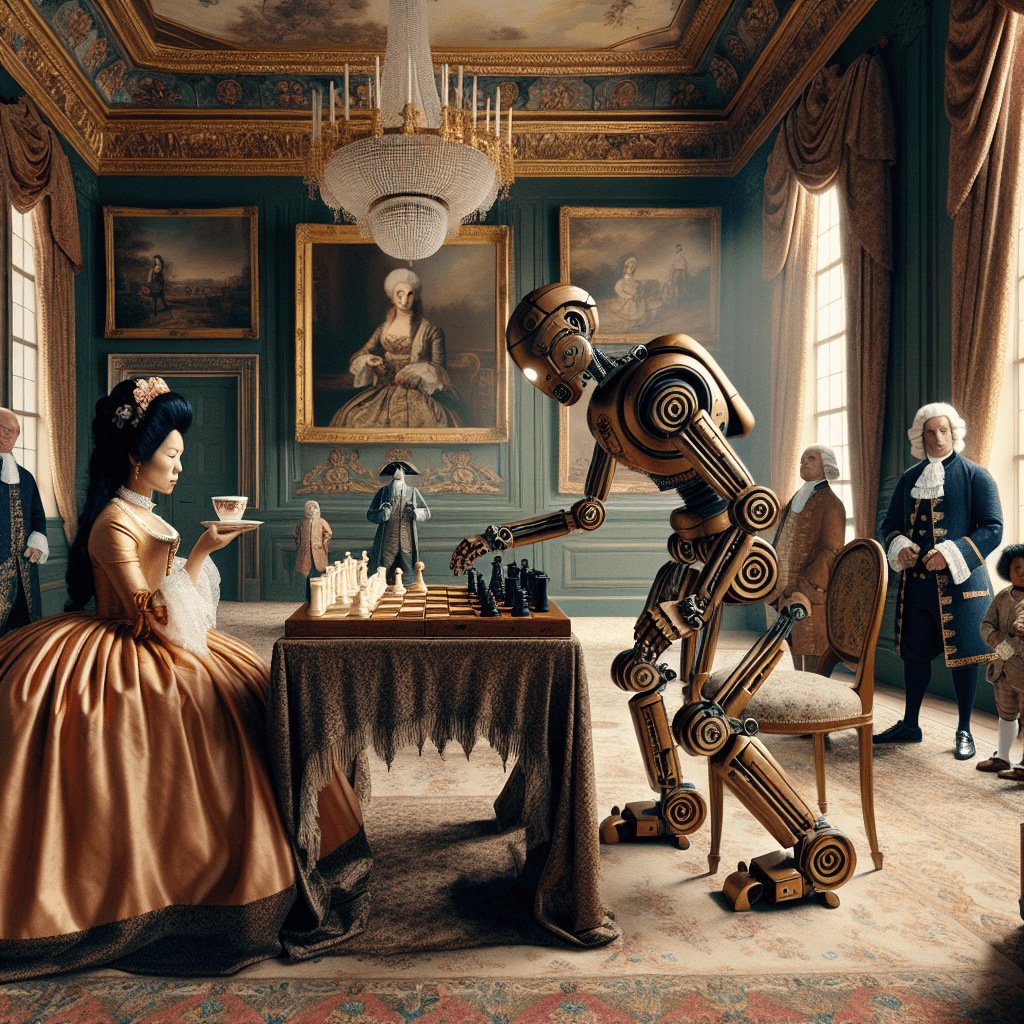Why did a fake chess-playing robot from the 1700s fool royalty for decades
Before the age of AI, a clockwork automaton defeated Napoleon Bonaparte and Benjamin Franklin at chess, captivating the world for 84 years—all while hiding a shocking, human-sized secret.


Too Long; Didn't Read
TLDR: A fake 18th-century chess robot fooled royalty for decades because a human chess master was secretly hidden inside. The hoax worked due to clever mechanical misdirection, brilliant showmanship, and an audience eager to believe in the possibility of a thinking machine.
The Mechanical Turk: Why Did a Fake Chess-Playing Robot from the 1700s Fool Royalty for Decades?
Imagine a world without computers, where the height of technology was intricate clockwork. Now, picture an automaton—a life-sized mechanical man—sitting at a chessboard, challenging and defeating the sharpest minds of the era, including Napoleon Bonaparte and Benjamin Franklin. This was the reality of "The Turk," a chess-playing machine that debuted in 1770 and captivated the world for over 80 years. It was hailed as a miracle of science, a true artificial intelligence centuries ahead of its time. But it was all an elaborate illusion. This post will delve into the ingenious mechanics and clever psychology behind one of history's greatest hoaxes and explore exactly why a fake chess-playing robot from the 1700s could fool royalty for decades.
The Master of Deception: A Machine for an Empress
The story begins in 1770 at the court of Empress Maria Theresa of Austria. A Hungarian inventor named Wolfgang von Kempelen, seeking to impress the Empress, unveiled his creation. The Turk was a magnificent spectacle: a mannequin dressed in Turkish robes, complete with a turban and a mustache, seated behind a large wooden cabinet.
Kempelen was a master showman. Before each performance, he would open the cabinet's doors to reveal a dazzling, complex array of gears, cogs, and clockwork, suggesting the machine operated on purely mechanical principles. He would pass a candle behind the machinery to prove no one was hiding inside. The audience, convinced of its authenticity, would watch in awe as The Turk autonomously moved the chess pieces with its own hand, nodding its head and even displaying "emotion" if an opponent made an illegal move. It was a marvel that perfectly captured the spirit of the Enlightenment, an age fascinated by science, reason, and human ingenuity.
How Did It Really Work? The Secret in the Cabinet
The secret to The Turk’s success was not its advanced mechanics, but its brilliant concealment of a human operator. The "complex machinery" was a masterclass in misdirection. Inside the cabinet was a cramped, cleverly designed space for a human chess master to sit.
The deception worked through a combination of ingenious engineering:
- A Sliding Seat: The operator sat on a sliding seat that allowed them to move from one side of the cabinet to the other, skillfully avoiding detection as Kempelen opened the various doors in a specific sequence.
- A Magnetic Board: The base of each chess piece contained a small magnet. Underneath the main board, a corresponding set of threaded magnetic discs would move whenever a piece was lifted or placed, allowing the hidden operator to track the game's progress in the dark.
- The Pantograph Control: A pantograph system—a series of levers and linkages—connected the operator's controls to The Turk’s left arm. By manipulating his own controls, the operator could precisely guide the mannequin's arm to grasp and move the pieces on the board above.
The noise of the winding clockwork and the creaking of the "machinery" during the game provided perfect cover for any sounds the hidden operator might make.
The Psychology of Deception: Why Royalty and Geniuses Fell for It
The technical brilliance of the hoax was only half the story. The Turk's enduring success hinged on several powerful psychological factors that Kempelen and later owners masterfully exploited.
1. The Power of Spectacle and Authority: The Turk was never just a chess machine; it was a theatrical event. Kempelen's dramatic presentation and the machine's exotic appearance created an aura of mystery and wonder. When it was presented in the royal courts of Europe, it gained an invaluable stamp of approval. If empresses and kings were impressed, who was a commoner to question it?
2. Confirmation Bias: The audience wanted to believe. In an age of groundbreaking scientific discovery, a thinking machine seemed like the next logical step. The Turk confirmed their belief in the limitless potential of human invention. Skeptics existed, but the desire to witness a miracle often overshadowed doubt.
3. Expert-Level Play: The machine didn't just play chess; it played brilliantly. This was because the hidden operators were always highly skilled chess masters. Defeating formidable opponents like Benjamin Franklin lent the machine immense credibility. A weak-playing machine might have been dismissed as a simple trick, but its strategic prowess made the idea of a "calculating engine" seem far more plausible. As Edgar Allan Poe, who wrote an essay attempting to debunk the machine, noted, its very fallibility—the fact it sometimes lost—made it seem more human and, ironically, more believable than a perfect machine would have.
Conclusion: A Legacy of Illusion and Inspiration
The Turk's reign finally ended in 1854 when it was destroyed in a fire, and its secrets were fully revealed in a series of articles by the son of its final owner. For nearly a century, this elaborate hoax succeeded not just because of a hidden compartment and clever levers, but because it tapped into the human desire to be amazed. It combined technical ingenuity with masterful showmanship and played upon the intellectual currents of its time. The Turk stands as a powerful reminder of our capacity for belief and our fascination with the line between human and machine—a fascination that sparked the very conversations about artificial intelligence that continue to this day. It was a trick, but a trick that inspired a dream.
More Articles

What creates the warm crackle sound unique to vinyl records?
That iconic warm crackle is more than just dust and nostalgia—it's the sound of a microscopic story of friction and physics being told in real-time.

Why do some insects build and wear a backpack made from the corpses of their victims?
For some of nature's tiniest predators, the best defense is a grisly offense—building a protective shield from the corpses of their vanquished prey.

Why are Earth's deserts not random, but aligned in two distinct belts?
It’s not a coincidence that the world's great deserts are aligned in two perfect bands; they are the direct creation of massive, invisible rivers of air that perpetually circle the globe.